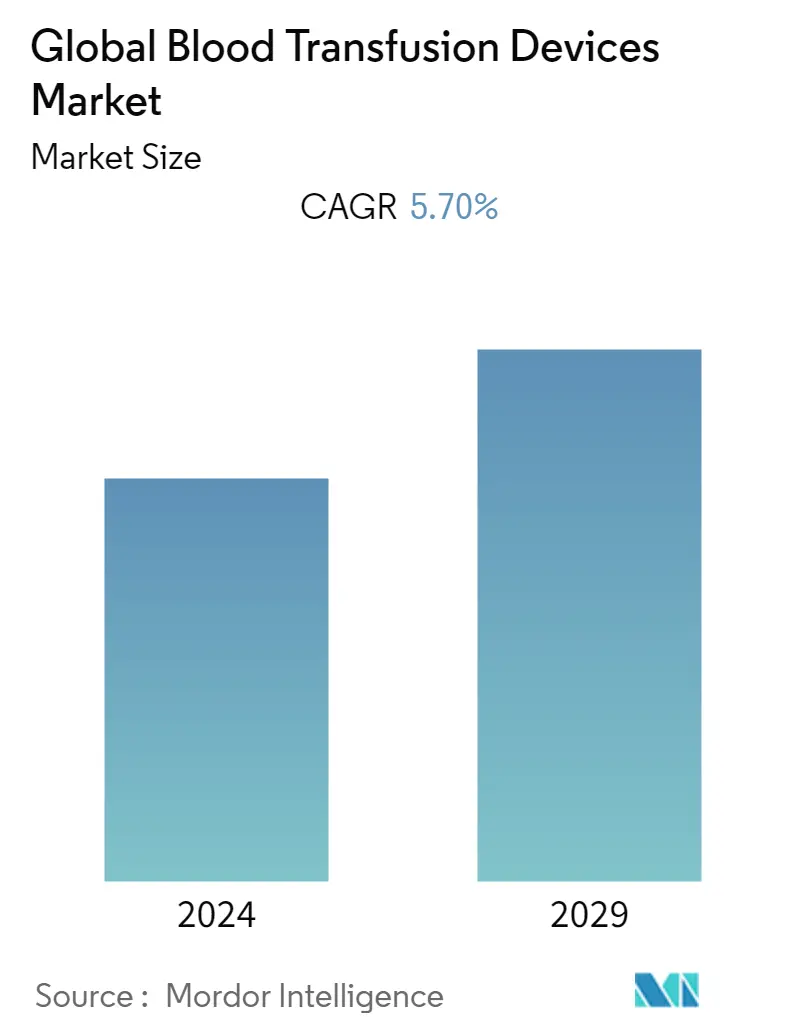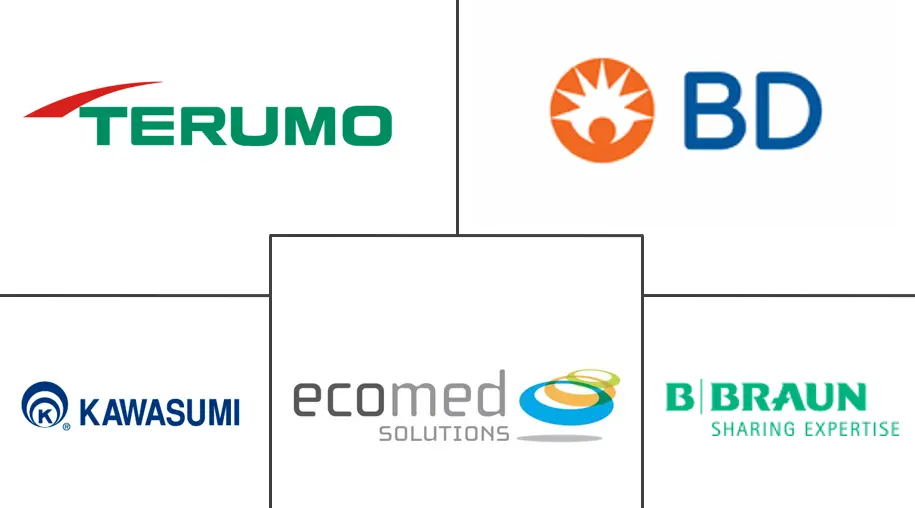Market Size of Global Blood Transfusion Devices Industry

| Study Period | 2019 - 2029 |
| Base Year For Estimation | 2023 |
| Forecast Data Period | 2024 - 2029 |
| CAGR | 5.70 % |
| Fastest Growing Market | Asia Pacific |
| Largest Market | North America |
Major Players
*Disclaimer: Major Players sorted in no particular order |
Need a report that reflects how COVID-19 has impacted this market and its growth?
Blood Transfusion Devices Market Analysis
The Blood Transfusion Devices Market is expected to register a CAGR of 5.7% during the forecast period (2022 - 2027).
Globally, the COVID-19 pandemic has caused overwhelming pressure on everyone around the world. Not only the public healthcare system is overloaded with patients, but also the public is panicked and restricted in their mobility, and their daily life is completely changed. According to a research study by Jennifer N. S. Leung et al., published in the International Society of Blood Transfusion in April 2020, in China, the first 3 months of the year 2020 were painful and stressful in managing both blood safety and supply. Furthermore, the blood transfusion service encounters significant difficulties to sustain a safe blood supply. With preventive measures, the public and donors have restored their confidence that blood donation is safe. However, as mobility restrictions continue to be enforced, there will be an ongoing challenge to collect sufficient blood to meet patients' transfusion demands. According to a research study by Andre Loua et al., published in the International Society of Blood Transfusion (ISBT) in December 2020, like all regions in the world, the African region also faced socio-economic disruption due to the COVID-19 pandemic. It makes a significant impact on health service delivery. Overall, it was revealed through the survey that the safe blood supply and demand were at risk since there was a decrease in these activities in most of the respondent countries in the region, especially at the beginning of the COVID-19 pandemic. Therefore, the COVID-19 pandemic has led to a reduction in blood-related activities in the African region, including supply and demand.
Some of the factors that are driving the market growth include the increasing number of surgical procedures, increasing accidents and trauma cases, a rise in the number of blood disorders, and technological development.
The most commonly performed surgeries that require blood transfusion include cardiovascular procedures, C-section procedures, and trauma and accident injuries. As per the World Health Organization updates in 2021, worldwide cesarean section rates have risen from around 7% in 1990 to 21% today, and are projected to continue increasing over this current decade. If this trend continues, by 2030 the highest rates are likely to be in Eastern Asia (63%), Latin America and the Caribbean (54%), Western Asia (50%), Northern Africa (48%) Southern Europe (47%) and Australia and New Zealand (45%). Thus, the growing number of surgical procedures is likely to increase the demand for blood transfusion devices.
Leukemia, lymphoma, myeloma, and myelodysplastic syndromes (MDS) are types of cancer that can affect the bone marrow, blood cells, lymph nodes, and other parts of the lymphatic system. It was observed that apheresis technology has been used, to reduce the number of white cells, until they can be controlled by other medications. For instance, leukemia is characterized by an abnormal increase of white blood cells making the blood thick.
According to the Leukemia & Lymphoma Society (LLS), approximately every three minutes, one person in the United States is diagnosed with blood cancer. An estimated combined total of 186,400 people in the United States are expected to be diagnosed with leukemia, lymphoma, or myeloma in 2021. New cases of leukemia, lymphoma, and myeloma are expected to account for 9.8 percent of the estimated 1,898,160 new cancer cases that will be diagnosed in the United States in 2021.
The market players are adopting various strategies such as product launches, developments, collaborations, partnerships, and expansions to increase market share. For instance, in May 2022, Vitestro launched an autonomous blood drawing device at the annual meeting of the Netherlands Society for Clinical Chemistry and Laboratory Medicine (NVKC) in Rotterdam. Vitestro's device combines AI-based, ultrasound-guided 3D reconstruction with robotic needle insertion, ensuring accurate and secure blood collection. Such launches are likely to drive market growth during the forecast year.
In addition, in January 2020, Fresenius Kabi inaugurates a EUR 30 million expansion of the transfusion and apheresis disposables plant in the Dominican Republic. The company undertook the expansion to meet the rising demand for these high-quality disposables. Moreover, Vitestro plans to begin a pivotal clinical trial of the new device for regulatory approval in Europe in 2023 and expects to bring it to the European market in 2024.
However, factors such as stringent regulatory framework and high costs associated with the handling of blood and its components are expected to impede the market growth over the forecast period.
